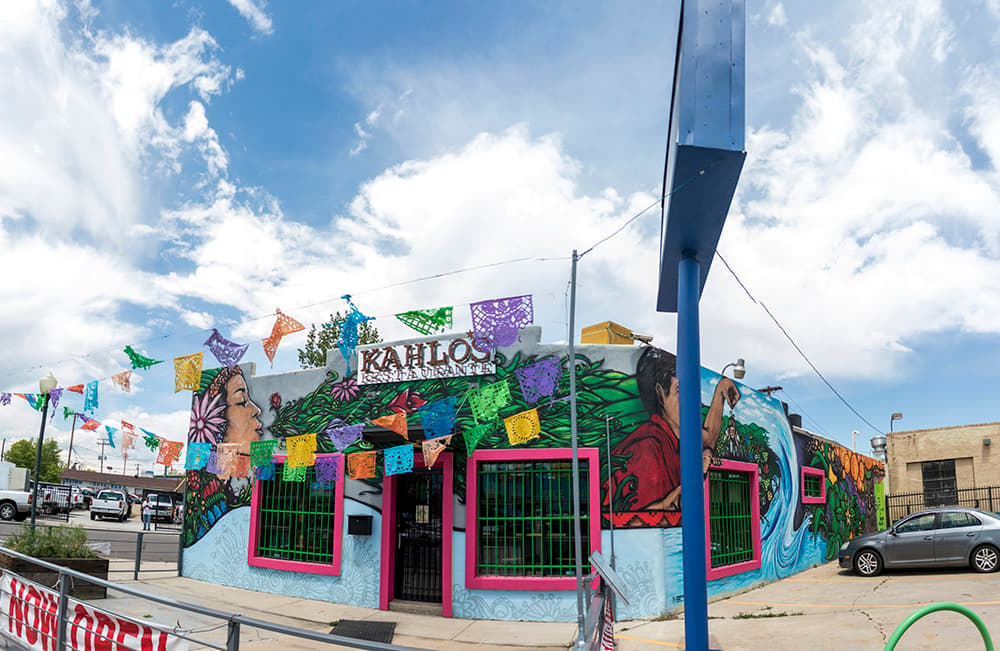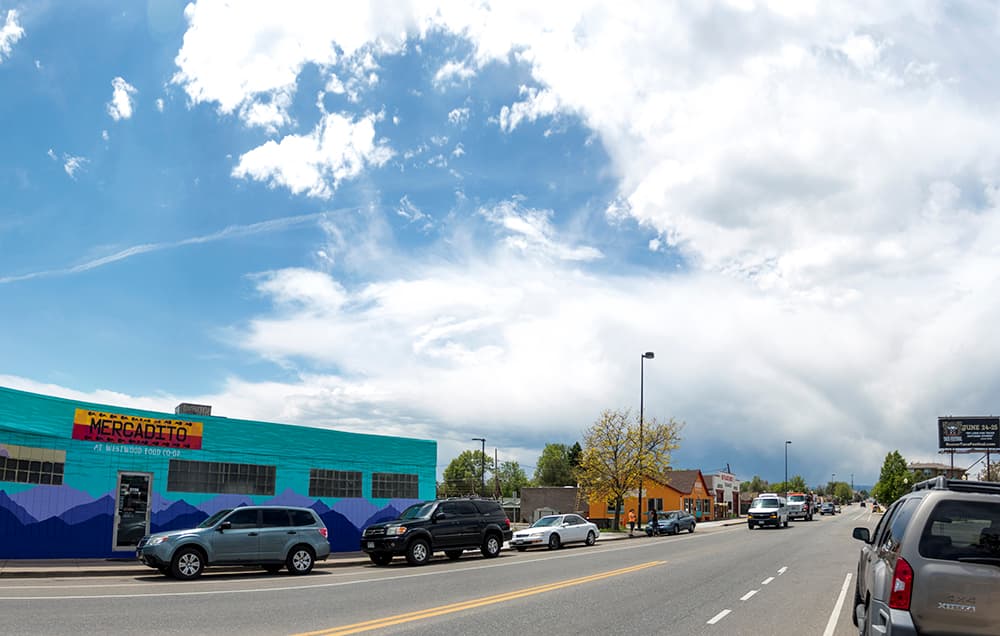
Denver is working to turn Westwood's Morrison Road into a Mexican Cultural District. To Councilman Paul Lopez, who represents west Denver, this is formalizing something that already existed along the corridor.
“The population (in Westwood) of Mexican-Americans is the highest in the city. What I’m really trying to do is to really celebrate that. It’s something that is absolutely unique to the neighborhood, and it is something that we believe sets it apart from other parts of the city,” Lopez said.
The creation of a Mexican Cultural District comes from the neighborhood plan for the Westwood area.
Adopted by the City Council last year, the plan included a proposal for a cultural district. Denver doesn't currently have an official process to create such a district, but the lack of "official" status doesn't mean the district isn't real. Denver already has places like the Little Saigon Business District along Federal Boulevard. The city will be looking for ways to celebrate and preserve authentic components of Westwood through art, urban design and unique economic opportunities.
“When we say cultural district, we really mean cultural district,” said Lopez. “It’s building community, and it's also ownership.”
Lopez said he envisions Morrison Road being similar to New York’s Little Italy, with its large Italian population, distinct architecture and variety of shops and Italian restaurants all creating an authentic cultural experience.
“You come to Westwood, and you’re not going to find many Taco Bells,” Lopez said. “You get that taste of authenticity. It is something that we are intending to create, to really build.”
As well as offering a taste of authentic Mexican food, Westwood is also looking to encourage residents to give their homes distinct architectural features. Westwood’s Neighborhood Plan points to neighborhood identity being expressed through symbolism. This can be achieved through enclosing residents' front yards with fences and gates, a form of architecture that is popular in Latino culture.
“There are folks who have said, 'Why don’t we put up this wrought iron fence?' You combine that with roses and a fountain and you’re in a separate little place. What we’re doing is giving these people a microphone,” said Lopez.
When you walk along Morrison Road you will also find murals that celebrate Latino culture. One mural that particularly stands out is a mural of civil rights leader Caesar Chavez.
“It's to celebrate who we are,” said Lopez. “You flip on the channel and you see that we are criminalized on TV. We are tired of seeing ourselves in such a negative way.”
The creation of a Mexican Cultural District has received backlash from some people. Lopez's office recently received a letter from someone who didn't give their name that attacked the idea of Mexican-Americans preserving Mexican culture in the U.S.
The letter started off by saying “Trump WON moron!!!” The anonymous writer continued and said that Westwood residents should “learn the English language, get jobs, get off government assistance, clean up their yards and learn AMERICAN CULTURE!!!”
Westwood is home to a variety of unique businesses that display Mexican and Latino culture.
Noe Bermudez owns two restaurants in the area, Tarasco’s located along South Federal Boulevard and Kahlo’s, another restaurant that recently opened along Morrison Road.
“We have to show who we are with work, and we have the opportunity to be here already, and this neighborhood is so ready for a lot of Mexican business,” said Bermudez.

Bermudez has lived in Westwood for 20 years, and he says the neighborhood is beginning to change for the better.
“There used to be a lot of drug dealers here, prostitution, but now I see it changing in a good way,” said Bermudez. “I don’t want to hear people say this is a bad neighborhood.”
Bermudez’s restaurants have attracted a wide demographic of customers, including people from out of the state and people who don’t live in the Westwood neighborhood, he said. With the creation of a Mexican Cultural District, Bermudez would like to see Morrison Road celebrate cultural events such as Día de los Muertos (Day of the Dead.)
“A lot of people travel to Mexico (for Day of the Dead), and they can see these kinds of things here in Denver,” Bermudez said.
Thomas Padilla hopes the changes to Westwood bring more business to his One Stop Bike Shop. The shop, which has been on Morrison Road for 26 years, sells a wide variety of bicycles. Padilla offers to customize bicycles for his customers by painting the frame.
“It’s people that drive through Morrison Road that see my bike shop. They’re the ones that buy a bike,” said Padilla. “I’m still here mostly because of what I do.”
Lopez hopes that the creation of a Mexican Cultural District and Westwood’s Neighborhood Plan can help businesses like Padilla’s bicycle shop.
“There are businesses that are very indigenous. They are bakeries, they are auto shops, they are boutiques, these are businesses that are organically occurring. It is an opportunity to identify these businesses,” said Lopez. “These are businesses that have existed for a long time. And that’s not to say new businesses won’t come in. There are a lot of folks that are looking to call Morrison Road home.”

With the city looking to improve Westwood, some have a fear of the area being gentrified.
Rosa Snyder is currently working on a campaign called “Our Home Our Right.” The campaign is focused on fair housing issues, particularly related to gentrification and displacement. It is currently partnered with the organization Re:Vision.
“Westwood is a prime area for gentrification,” said Snyder. “There hasn’t really been an effort to mitigate that.”
Snyder and Eric Kornacki, the executive director of Re:Vision, have both pointed to rising rents in the neighborhood.
“We’ve seen a lot of families have to leave the area because the rent increased,” said Kornacki. “All of these improvements are good in that they are creating a healthier and safer neighborhood. At the same time, when you don’t have people secure in their housing, they are very susceptible to being forced to move out.”
The Our Home Our Right campaign is helping people who have been evicted by creating a community credit system in partnership with the University of Denver Sturm College of Law. When people don't have a Social Security number and have an eviction on their record, they can say that they are a part of the community credit system to help them when applying for rent.

“We’re helping folks who have an eviction on their record,” said Snyder. “They might be undocumented, and it increases housing discrimination when they don’t have a Social Security number.”
The Our Home Our Right campaign is also exploring the idea of a community land trust.
“We just want to bring awareness that they own their homes, to be wary of people walking our neighborhood and investors asking to sell their home,” said Snyder.
“You’ve got investors purchasing those properties, now they’re renting, they’re increasing rents month after month,” said Kornacki.
Organizations like Re:Vision and Westwood Unidos, a neighborhood organization, have received money from the city and see the city increasing its investment in the community.
“Paul Lopez has been a great champion,” said Kornacki. “He’s got a lot of things done for this community.”













